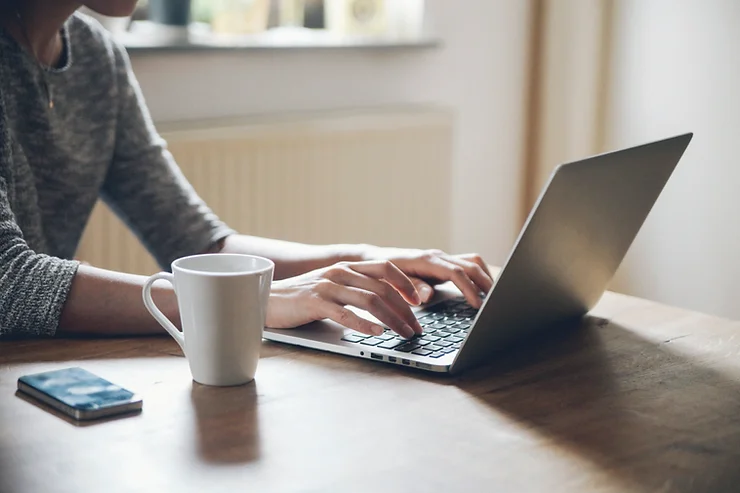5 Hacks To Create A Productive & Ergonomic Home Office

There has been a lot of fluidity over the last few months but one thing that has stayed mostly constant is that a lot of people are still working from home. Kate Lister, president of Global Workplace Analytics estimates that between “…25-30% of the workforce will be working-from-home multiple days a week by the end of 2021.”
That’s a pretty massive shift and if you’re one of millions who has been displaced from your office, chances are good that your current “home office” is either spread out on your bed, couch or kitchen table (not ideal!). This could be the perfect time to start thinking about how to create a home office space that works for you! Here are a few home office “hacks” to help you get started…
First, decide on the best spot for your home office.
1. Location – In general, you want to establish a dedicated workspace in an area where distractions are limited and there is plenty of natural light.Natural light helps you focus better and keeps you more alert.Avoid places like your bedroom and common areas in your home.If you’ll be using a virtual meeting platform like Zoom or Go To Meeting, try getting close to your Wi-Fi router for the best signal strength.
Next, invest in a quality chair.
2. Chair – No one knows how long our current situation will last. And there is a strong possibility that working from home or at least a “hybrid” work schedule could be around for quite some time. But what constitutes a “quality” chair? Well, this will depend on the person, but I’ve found the best chairs tend to have a sturdy lumbar support and come with adjustable bases and arm rests. When purchasing your chair, be sure to consider the type of desk you have, which brings me to my next point…
It’s best to move between sitting and standing.
3. Desk – I always like to recommend a sit / stand desk. If you get caught up in your work, it’s easy to lose track of time and before you know it, you may have been sitting for 2-3 hours. This places an incredible amount of strain on your lower back and over time can lead to back pain, stiffness and loss of mobility. If you can alternate between sitting and standing, that will save you loads of trouble down the road! Now that you have your desk and chair, let’s get it set up properly! 4. Adjustments – Start by sitting all the way back in your chair. Adjust your chair so that your feet are grounded (if you’re vertically challenged, you may need to put a small stool or box under your feet). Your knees and hips should be bent at 90 degrees and with your forearms resting on either the desk or your armrests, your elbows should be bent to about 90 degrees also. This is key to limiting the amount of strain placed through your shoulders and neck throughout the day. Now, make sure your computer screen is just at or slightly below eye level. Great job so far – your new home office is coming together! 5. Breaks – Now that you’ve got the location picked out and you’ve got a quality chair and desk, it’s time to put in a 12-hour day, right? Only kidding. Before that happens, make sure you have a system in place to ensure you are giving yourself breaks at least once per hour to stand up and move around. Prolonged sitting has been linked to systemic health problems like heart disease and diabetes. Not only that, but it’s been shown that people who get up and move around throughout the day are also more productive!* BONUS!!! 6. Structure – Check out this awesome article “10 Lessons On Time Management From Bill Gates” to help you get the most out of your days! *BMC Public Health “Impact of a workplace ‘sit less, move more’ program on efficiency-related outcomes of office employees”.
